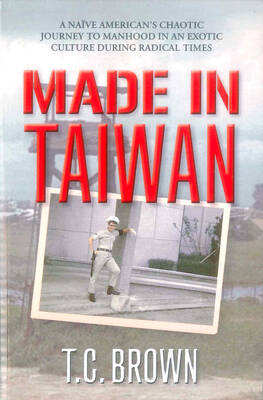The black and white silent movie flickered into life as the pianist started up with a dramatic flourish. Cue the latest exploits of daring master criminal “Three-Fingered Kate.”
The head of a gang behind a string of audacious robberies, Kate — who is missing the last two digits of her right hand — always manages to outwit her rival, Sheerluck Finch, aka fictional detective Sherlock Holmes.
Nearly a century after the first “talkies” displaced silent movies for good, a society of London cinephiles still gather regularly to celebrate these largely forgotten works from the dawn of cinema.

Photo: Reuters
The Kennington Bioscope searches out rare films from the era — many not seen for many decades — and screens them with live improvised accompaniment on the piano, just as they would have been a century ago.
In a curious twist, the cavernous venue where the Bioscope meets — now home to London’s Cinema Museum — was formerly the chapel of the 19th-century south London workhouse to which a young Charlie Chaplin was sent.
“It’s an amazing synchronicity,” said silent film devotee Alex Kirstukas, 32.

Photo: AFP
Chaplin, the legendary British comic actor and director, grew up in poverty nearby before beginning his career in the silent era.
Along with his struggling theater hall artiste mother and elder brother, he was sent to the workhouse — grim institutions for the destitute — twice before the age of nine.
Now a cornucopia of film memorabilia, the building is crammed with vintage projectors, publicity posters and other pieces of cinematic history.
‘GLAMOR’
Bioscope regular Kirstukas said “bringing together rarities” in a place where “decades and decades” of film history had been assembled made it a one off.
“There is such a strange charm and uniqueness to the place,” the American postgraduate film student said, adding that he had been in love with silent movies since discovering them as a child.
“It’s a different world, a different type of story-telling with an incredible variety and imagination to it,” he said.
The Bioscope’s Michelle Facey said she was initially attracted by the “glamor” of the silent movie stars.
But she soon realized just how important the films were, both in their own right and for their influence on later film-makers.
“They were innovating all the time because it was early film and it’s still a quarter of all film history that is in this silent film period,” she said.
“If you watch The Trial by Orson Welles there’s an overhead shot of a huge space with all these desks in it.
“When I saw King Vidor’s The Crowd from 1928 there was that shot — that’s where he got it from. It’s so interesting to see the clear line between these things,” she added.
The silent movie era is generally considered to have begun in 1894. By the early 1930s it had had its day.
The first feature-length sound film The Jazz Singer was released in 1927, kickstarting the total transformation of the industry.
LOST MOVIES
The Three-Fingered Kate short film — Kate Purloins The Wedding Presents — was a classic Bioscope find.
Kate, played by French actress Ivy Martinek, and her gang of fellow reprobates tunnel through a fireplace to swipe gifts from a neighboring house.
Martinek starred in dozens of films made by the British and Colonial film company, including the series of seven Kate crime capers made between 1909 and 1912, only one of which survives.
As a convention-flouting “gang leader”, her appeal lay very much in not being a “goodie,” according to Ian Christie, professor of film and media history at Birkbeck College University of London.
But despite her star status, Martinek and other silent movie stars remain “shadowy” figures due to the loss of so much of their work.
Only a small proportion of silent movies have survived.
For British movies in particular there is a “great gap” between 1906 and the early 1920s, said Christie, making the work of groups like the Kennington Bioscope to find and show long lost gems all the more important.
The small gatherings of several dozen dedicated silent movie lovers are a world away from the heyday of silent films.
In the early 20th century huge crowds flocked to cinemas to see their favorite stars.
With few of the films these cinema-goers enjoyed still in existence, the search goes in dusty archives and private collections.
“Until recently I despaired of ever seeing any of Three Fingered Kate,” Christie said. Sometimes “no sooner do you find something and it disappears again,” he added.

During the Metal Ages, prior to the arrival of the Dutch and Chinese, a great shift took place in indigenous material culture. Glass and agate beads, introduced after 400BC, completely replaced Taiwanese nephrite (jade) as the ornamental materials of choice, anthropologist Liu Jiun-Yu (劉俊昱) of the University of Washington wrote in a 2023 article. He added of the island’s modern indigenous peoples: “They are the descendants of prehistoric Formosans but have no nephrite-using cultures.” Moderns squint at that dynamic era of trade and cultural change through the mutually supporting lenses of later settler-colonialism and imperial power, which treated the indigenous as

By 1971, heroin and opium use among US troops fighting in Vietnam had reached epidemic proportions, with 42 percent of American servicemen saying they’d tried opioids at least once and around 20 percent claiming some level of addiction, according to the US Department of Defense. Though heroin use by US troops has been little discussed in the context of Taiwan, these and other drugs — produced in part by rogue Chinese Nationalist Party (KMT) armies then in Thailand and Myanmar — also spread to US military bases on the island, where soldiers were often stoned or high. American military policeman

An attempt to promote friendship between Japan and countries in Africa has transformed into a xenophobic row about migration after inaccurate media reports suggested the scheme would lead to a “flood of immigrants.” The controversy erupted after the Japan International Cooperation Agency, or JICA, said this month it had designated four Japanese cities as “Africa hometowns” for partner countries in Africa: Mozambique, Nigeria, Ghana and Tanzania. The program, announced at the end of an international conference on African development in Yokohama, will involve personnel exchanges and events to foster closer ties between the four regional Japanese cities — Imabari, Kisarazu, Sanjo and

The Venice Film Festival kicked off with the world premiere of Paolo Sorrentino’s La Grazia Wednesday night on the Lido. The opening ceremony of the festival also saw Francis Ford Coppola presenting filmmaker Werner Herzog with a lifetime achievement prize. The 82nd edition of the glamorous international film festival is playing host to many Hollywood stars, including George Clooney, Julia Roberts and Dwayne Johnson, and famed auteurs, from Guillermo del Toro to Kathryn Bigelow, who all have films debuting over the next 10 days. The conflict in Gaza has also already been an everpresent topic both outside the festival’s walls, where